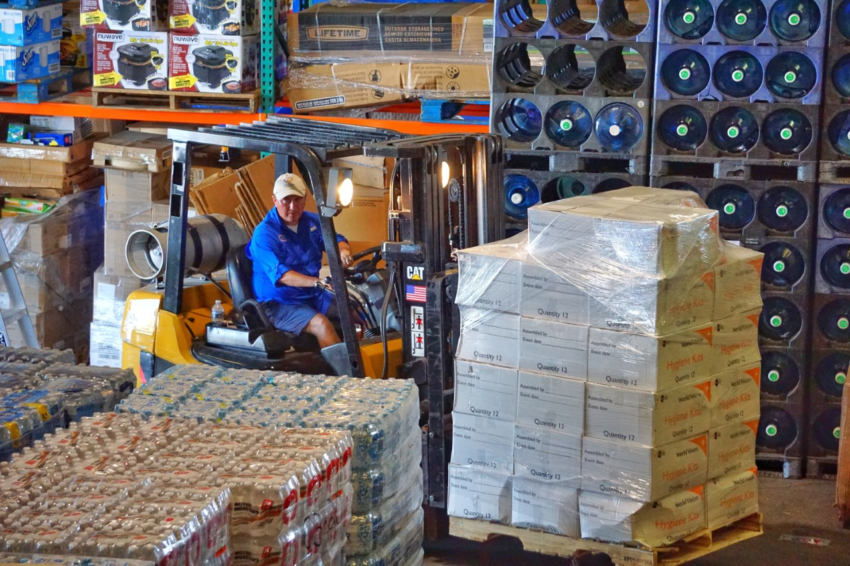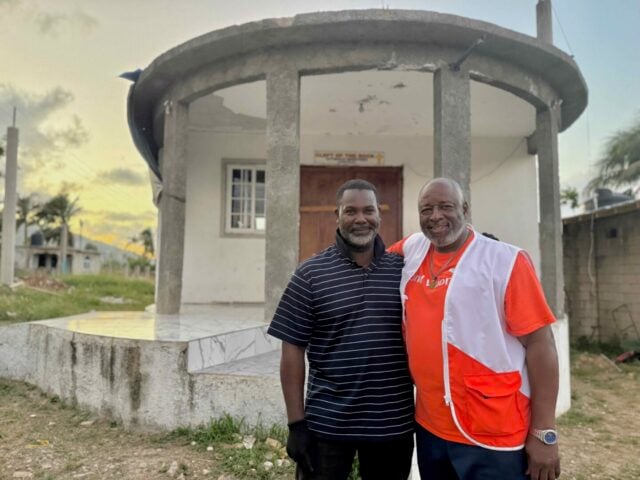Hurricane Dorian was one of the most powerful Atlantic hurricanes on record — and the strongest to ever hit the Bahamas. The Category 5 storm made landfall on September 1, 2019, in the northern Bahamas, bringing sustained winds of 185 mph and a storm surge of up to 23 feet. It stalled over the Abaco Islands and Grand Bahama, unleashing days of catastrophic damage before turning toward the southeastern United States. Dorian’s trail of destruction displaced thousands of people and caused billions of dollars in damage.
Hurricane Dorian: Facts, FAQs, and how to help
- Fast facts: Hurricane Dorian
- How did World Vision help communities impacted by Hurricane Dorian?
- How does World Vision respond to natural disasters globally and in the U.S.?
- How can I help people affected by hurricanes and other disasters in the U.S.?
Fast facts: Hurricane Dorian
- First major hurricane of the 2019 Atlantic hurricane season, which runs from June 1 to November 30
- Reached Category 5 strength with sustained winds of 185 mph at landfall in Elbow Cay, Bahamas
- Caused catastrophic damage across the Abaco Islands and Grand Bahama on September 1, 2019
- Claimed the lives of at least 74 people in the Bahamas, with hundreds reported missing in the following months
- Estimated $3.4 billion in damages in the Bahamas and $1.6 billion in the U.S.
How did World Vision help communities impacted by Hurricane Dorian?
World Vision was able to rapidly respond to Hurricane Dorian because of our emergency response teams and pre-positioned supplies at warehouses in the U.S. In anticipation of Dorian’s landfall, we shipped truckloads of relief supplies to partner organizations in Daytona Beach and Immokalee, Florida, to prepare for distribution in hard-hit areas.
During and after the storm, World Vision supplied food, water, hygiene kits, cleaning supplies, and toys for children. Our response focused on supporting local churches to extend care beyond immediate needs, including helping rebuild homes.
“Each of these storms is different, but we’ve learned a lot from that experience,” said Pastor Justin Barnett of Jackson Heights Original Free Will Baptist Church in Kinston, North Carolina, who recalled World Vision’s aid during Hurricane Florence in 2018. “World Vision’s help was a big blessing to us then.”
How does World Vision respond to natural disasters globally and in the U.S.?
With decades of experience, a trusted global network of trained emergency responders, and a presence in nearly 100 countries, World Vision is equipped to respond to multiple major crises at once, including earthquakes, hurricanes, floods, refugee and displacement emergencies, and more.
In 2024 alone, World Vision responded to 84 disasters and emergencies in 65 countries, providing lifesaving aid and ongoing support to over 35.2 million people.
When disaster strikes, we are there, delivering essentials like food, access to clean water, hygiene supplies, and household items — including cleanup kits. We also promote critical hygiene practices to help prevent disease outbreaks.
Our child protection teams respond quickly in urgent cases, supporting children who are separated from family or experiencing abuse, exploitation, or trauma. We also work to meet ongoing needs related to healthcare, nutrition, and education.
Beyond the initial response, we help families rebuild for the long term — restoring homes, ensuring clean water access, strengthening food security, and supporting children’s return to school.
In the U.S., we’re often one of the first organizations to respond to disasters. With strategically placed warehouses, expert emergency teams, and a network of thousands of church and community partners, we mobilize quickly to serve families with essential supplies.
Thanks to the generosity of donors and partners, our impact continues to grow. In 2024, in partnership with 27 churches and nonprofits, we supported over 50,000 children and adults in the U.S. through emergency relief efforts.


